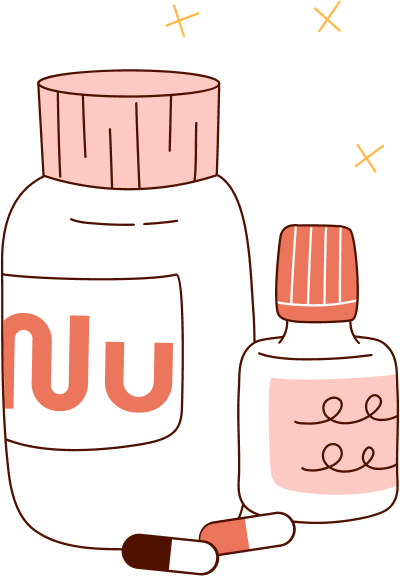Hair loss during menopause can be overwhelming. It can start during the perimenopause period, years before menopause officially begins, and can last into post-menopause. Did you know that it doesn’t have to be a permanent struggle? Imagine restoring your hair’s volume and vitality in just a few months with a safe, effective treatment.
Struggling with Hair Thinning During Menopause? Discover How to Regain Thicker, Healthier Hair in Just a Few Months.
Even if you’ve been disappointed by countless other hair loss treatments, there’s a patent pending, scientifically backed solution that can make a real difference.
Did you know 52.2% of post-menopausal Women suffer from Female Pattern Hair Loss (FPHL)?
The prevalence of FPHL, also known as Androgenetic Alopecia, increases with age, leaving many women feeling helpless as they watch their hair thin and fall out.
If you don’t address this issue, your hair loss will continue to worsen, affecting your confidence and quality of life.
Ignoring hair loss can lead to further thinning, a widening part, and significant emotional distress. The sooner you act, the better your chances of reversing the damage.
Let me introduce to you our female hair loss solutions – NuGrowthRx™

NuGrowthRx™ our hair thinning solutions combine the power of oral Finasteride and oral Minoxdil that are FDA-approved medications used for hair loss treatment for postmenopausal women. This potent duo can help you regrow hair, maintain density and regain your confidence.
This works even if you‘ve tried everything else and failed!
If you’re considering or have just started using this combo, you might be wondering what to expect. Here’s a detailed look at how these treatments work together, what benefits and side effects you might experience, and how to maximize their effectiveness. Be patient! It will take you at least 3 to 6 months to see visible hair regrowth.
The Science Behind Hair Loss – How Finasteride and Minoxidil Work
Finasteride
Mechanism of Action:
- Finasteride for hair loss is an oral medication primarily used to treat both female and male pattern baldness. It has been for years FDA approved for male pattern hair loss.
- DHT Inhibition: Finasteride inhibits the Type II 5-alpha reductase enzyme, which is responsible for converting testosterone into DHT. By reducing Type II 5-alpha reductase enzyme and subsequently DHT levels, Finasteride helps to significantly slow down the miniaturization of hair follicles, which is a cause of both male and female pattern baldness.
- Hair Follicle Health: With lower levels of DHT, hair follicles can return to their normal size and continue to produce healthy hair.
Scientific Evidence:
- Studies have shown significant improvement in hair growth when postmenopausal women were treated with Finasteride.
Usage and Side Effects:
- Post-menopausal women and permanently sterilized women may use Finasteride. Menstruating women should not use Finasteride because Finasteride is known to cause birth defects in male babies.
- Is Finasteride safe for long-term use? Side effects may include decreased libido, breast tenderness, and breast enlargement.
Minoxidil
How It Works:
Minoxidil has been used as a topical medication that promotes hair growth and can be applied directly on the scalp twice daily. It is available FDA approved over-the-counter in both2% and 5% formulations.
At NuGrowthRxTM we use prescription oral minoxidil since it is more effective, less expensive, no application hassles and only needs to be orally taken once a day.
Mechanism of Action:
- Vasodilation: Minoxidil acts as a vasodilator, increasing blood flow to hair follicles, providing them with more oxygen and nutrients. There is an important enzyme in the scalp called sulfotransferase, that influences how well (or not) topical minoxidil is absorbed.
- Taking oral minoxidil bypasses this scalp enzyme and uses the more efficient liver sulfotransferase. This results in a higher level of minoxidil delivered to the hair follicles which can give you better results.
- Follicle Stimulation: Minoxidil helps to prolong the anagen (growth) phase of the hair cycle and stimulates follicles that have shrunk due to DHT.
Scientific Evidence:
- Studies have shown that oral minoxidil is more effective than 5% topical minoxidil, which is more effective than the 2% formulation with noticeable hair growth observed in as little as eight weeks.
- Research in the Journal of the American Academy of Dermatology found that Minoxidil could increase hair density and thickness, especially in individuals with androgenetic alopecia.
Usage and Side Effects:
- Oral minoxidil is a small pill easily taken orally once a day with no application hassles.
- Oral Minoxidil, like topical Minoxidil, may also have unwanted facial hair growth.
- Slowing Down Hair Loss
Finasteride: By significantly reducing DHT levels, Finasteride helps to slow or even halt the progression of hair loss. Clinical studies show that around 83% of men taking Finasteride experience no further hair loss over a two-year period.
Minoxidil: Helps maintain existing hair and prevent further thinning by improving scalp health and hair follicle function.
- Promoting Hair Regrowth
Finasteride: While primarily focused on preventing further hair loss, Finasteride can also contribute to some degree of regrowth, particularly in the crown and mid-scalp areas.
Minoxidil: More effective for regrowth, especially when used in combination with Finasteride. Users typically notice new hair growth within 3 to 6 months of consistent use.
Regrowth Data:
In one study, 26 women received oral minoxidil and 26 women received topical minoxidil. After 24 weeks of treatment, there was a 12% increase in hair density for women on oral minoxidil and 7.2% increase for women applying topical minoxidil.
- Increasing Hair Thickness
Both treatments can lead to thicker, healthier hair. Minoxidil helps thicken individual hair strands and increases hair density, while Finasteride ensures that hair follicles remain healthy and productive.
One study found that women who used a combination finasteride and minoxidil for 24 weeks saw more significant improvements in hair diameter than those who only used minoxidil.
- Timeline of Results
1-3 Months:
Finasteride: Initial stabilization of hair loss. Some users may experience a temporary increase in shedding as hair follicles adjust.
Minoxidil: Early signs of increased hair density and slight regrowth. Possible initial shedding as weaker hairs are replaced by stronger ones.
3-6 Months:
Finasteride: Continued reduction in hair loss. Noticeable decrease in hair thinning.
Minoxidil: Visible improvement in hair thickness and density. New hair growth becomes more apparent.
6-12 Months:
Finasteride: Significant reduction or cessation of hair loss. Some users may see regrowth in thinning areas.
Minoxidil: Consistent regrowth with thicker, healthier hair. Maximum benefits typically observed around the 12-month mark.
Potential Side Effects
Finasteride:
Common Side Effects: Decreased libido, erectile dysfunction, and reduced ejaculate volume. These effects are rare and reversible upon discontinuation.
Other Considerations: Some users may experience breast tenderness or enlargement, and a small number might have allergic reactions.
Minoxidil:
Unwanted facial hair growth in some cases.
Secrets to Supercharge Your Hair Regrowth
Consistency is Key:
- Finasteride: Take the medication at the same time every day to maintain steady DHT levels.
- Minoxidil: Take the medication at the same time everyday to maintain benefit of increased oxygen and nutrient supply to the hair follicle.
Patience and Persistence:
- Hair growth treatments take time to show results. Be patient and give the treatments at least 6 to 12 months to work.
- Don’t be discouraged by initial shedding; it’s a sign that the treatment is working to replace weaker hairs with stronger ones.
How to stop hair loss naturally–Healthy Lifestyle:

Did you know that a Nutrient-rich diet for hair health is essential? Maintaining a balanced diet rich in vitamins like biotin, zinc, and iron is critical for supporting hair health.
Reduce stress through exercise, meditation, or other relaxation techniques, as stress can exacerbate hair loss.
Attempt to sleep at least 6 hours a day.
If you smoke, it is imperative to seek assistance to quit smoking. Smoking is very detrimental to your hair health.
Regular Check-Ins:
Monitor your progress by taking monthly photos of your hair. This will help you see the gradual improvements and stay motivated. Consult with your doctor regularly to discuss your progress and any concerns you may have.
Conclusion
Using a combination of Finasteride and Minoxidil can significantly slow down hair loss, promote regrowth, and increase hair thickness. While results can vary from person to person, many users experience noticeable improvements within 6 to 12 months of consistent use. By understanding what to expect and how to maximize the effectiveness of these treatments, you can take proactive steps toward managing hair loss and improving your hair health.
Remember, it’s important to consult with your dermatologist or doctor before starting any new treatment to ensure it’s appropriate for your specific condition and to discuss potential side effects and interactions. With patience, persistence, and the right approach, you can achieve the best possible outcomes for your hair growth journey. Your hair growth journey is a marathon, not a sprint.
Ready to transform your hair? Discover the powerful combination of Finasteride and Minoxidil with NuGrowthRx™.
Click here now to get your personalized hair treatment plan designed specifically for you!
Start your personalized hair regrowth journey with NuGrowthRX™ today. Don’t wait–transform your hair and your life. Click here to begin your consultation and see the difference science can make!
Ramos, P. M., Sinclair, R. D., Kasprzak, M. & Miot, H. A. Minoxidil 1 mg oral versus minoxidil 5% topical solution for the treatment of female-pattern hair loss: A randomized clinical trial. J Am Acad Dermatol 2020; 82: 252–253
Iamsumang W, Leerunyakul K, Suchonwanit P. Finasteride and Its Potential for the Treatment of Female Pattern Hair Loss: Evidence to Date. Drug Des Devel Ther. 2020 Mar 2;14:951-959.
Nobari NN, Roohaninasab M, Sadeghzadeh-Bazargan A, Goodarzi A, Behrangi E, Nikkhah F, Ghassemi M. A systematic review of clinical trials using single or combination therapy of oral or topical finasteride for women in reproductive age and postmenopausal women with hormonal and nonhormonal androgenetic alopecia. Adv Clin Exp Med. 2023 Jul;32(7):813-823.
Nirupama Bhagya Lakshmi T, Sathvika G. Role of oral minoxidil in the treatment of androgenetic alopecia. CosmoDerma. 2024:4:19. doi: 10.25259/CSDM_225_2023
Chaikittisilpa S, Rattanasirisin N, Panchaprateep R, Orprayoon N, Phutrakul P, Suwan A, et al. Prevalence of female pattern hair loss in postmenopausal women: A cross-sectional study. Menopause. 2022;29:415-20.
